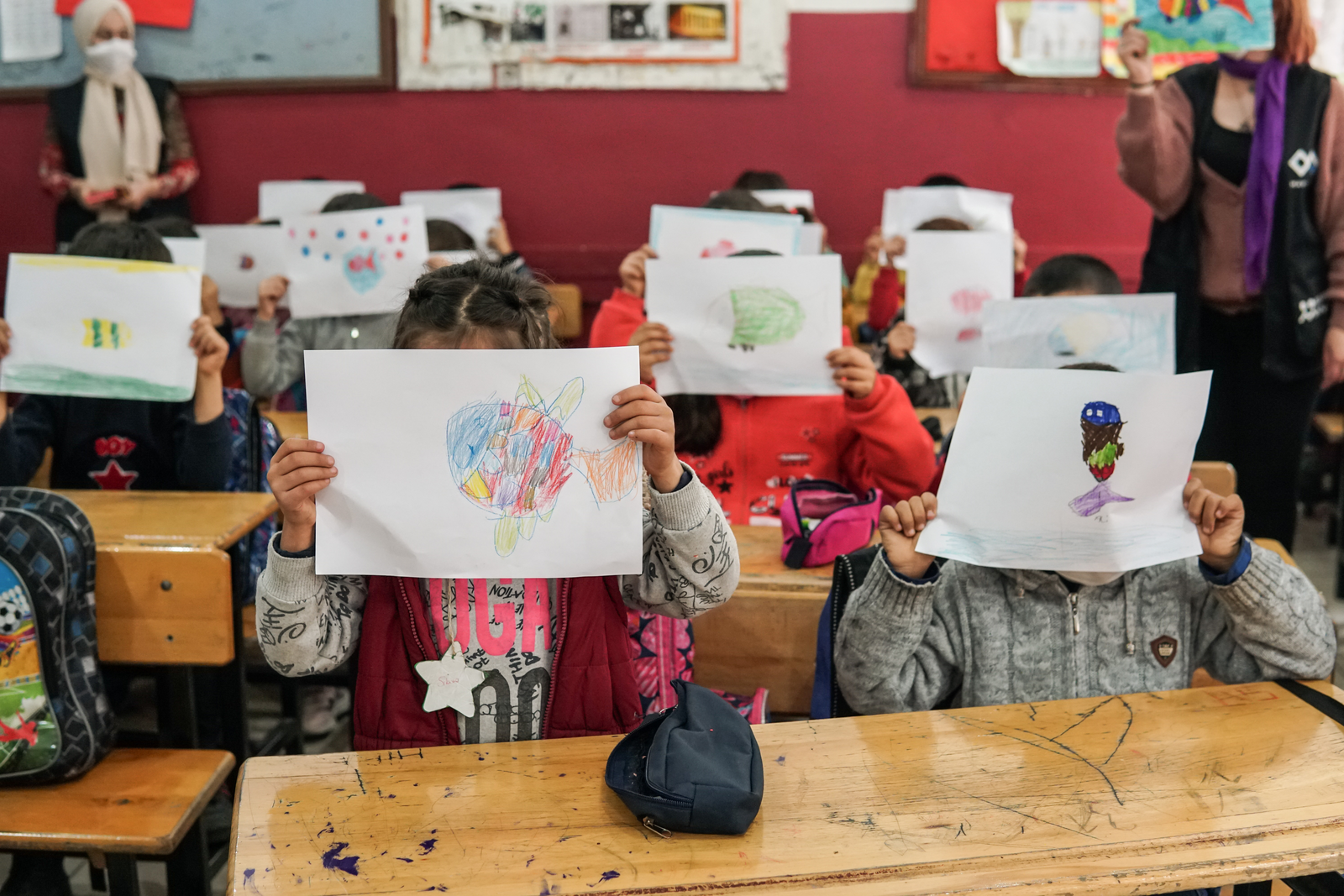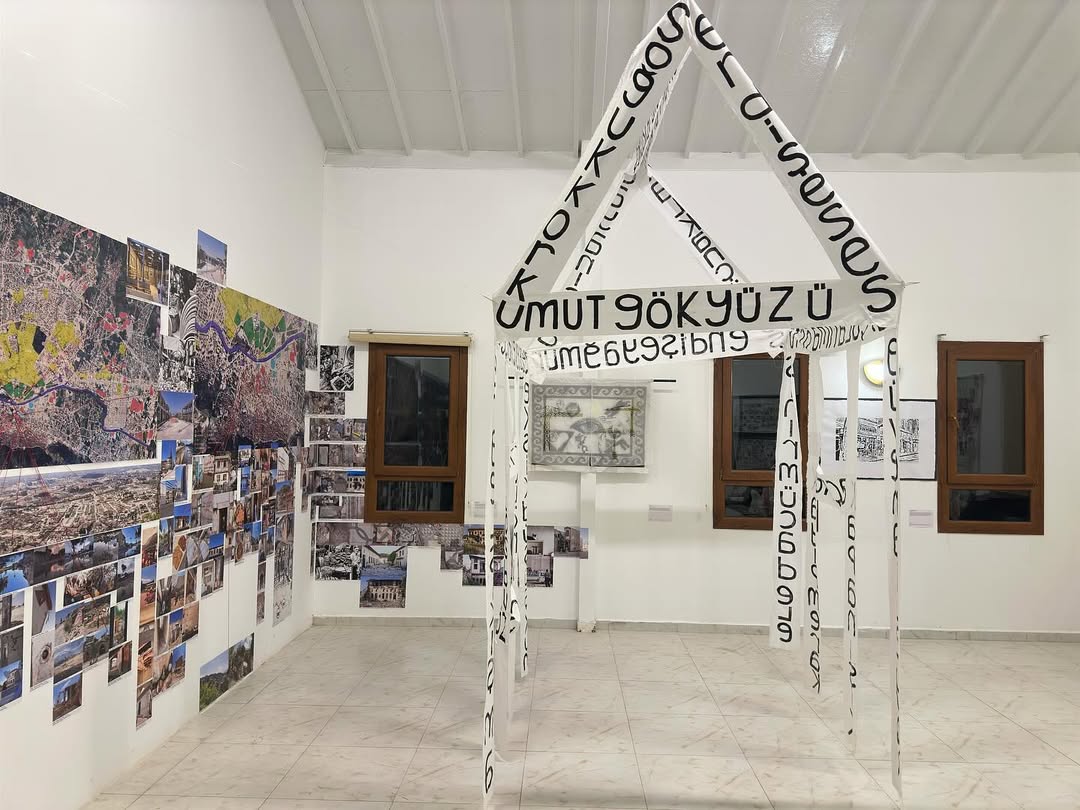
On Feb. 6, 2023, earthquakes struck Türkiye and left entire provinces in ruins. The destruction touched not only cities but also people’s spirits.
Hundreds of thousands lost their homes, and tens of thousands lost their families.
The rubble still lingers, both on the streets and in the hearts of survivors. Yet from that devastation, a fragile but determined hope has begun to emerge: art.
Across the earthquake zones, art workshops have sprung up as spaces of healing for both children and adults. From painting to sculpture and poetry to mosaics, creative work has become a way of representing rebirth from the wreckage.
From children painting suns on broken bricks to sculptors piecing together fragments of their past, stories from the quake zone reveal how creativity is helping a wounded society imagine itself anew.

In Antakya, among the container homes set up for shelter, one container stands out. It has been turned into a makeshift art tent, bright with color.
Around the tables, children hold brushes and paint on bricks, stones, and scraps of cardboard. One paints a sun, another paints the tree from the garden of their demolished home.
Art therapist Elif D. studies their drawings carefully: “Here, they say with colors what they cannot say with words. Some draw what they have lost, others the home they dream of. While painting, they grieve—but they also imagine a future.”
It is not only children who find solace in art. In Antakya, a group of survivors gathers fragments from the ruins, such as door handles, shards of glass, and broken marble, and assembles them into a collective sculpture called The Stone of Remembrance.
Huseyin B., a teacher who lost his home, turns a chipped slab of marble over in his hand: “This stone came from my house. At first, holding it crushed me. Then I thought: with the same stone, I can create a new pattern. We cannot forget the past, but we can carry it into the future.”
In Hatay, one of the most concrete responses to the quake’s devastation has been the creation of the Culture and Art Bazaar in Defne. With 82 workshops, it has reunited artists who lost their studios and given them space to create again.
Painter Yusuf Altunay, who lost the workshop he had worked in for 32 years, now paints scenes of old Antakya onto his canvas.
Artist Derya Tatlici, after volunteering in container camps with children, covers her new studio walls with images of destroyed streets and homes.
Master woodcarver Ismail Demirel revives traditional crafts, passing them on to younger generations.
The bazaar is now more than just a place for making things. It has become a space of collective memory.

In a region rich in culture, efforts to safeguard heritage have become as urgent as the struggle to heal. Exhibitions in Antakya underline art’s power to console and connect. Local painters recreate the fragments of better days still alive in memory.
The 6 February Memorial Exhibition, organized by ArtAntakya and the Ansam Cultural Association under the guidance of Mehmet Oflazoglu, used the empty, shattered walls of the city as a backdrop, underscoring art’s role in coping with trauma.
The exhibition Our Color is Antakya was staged in solidarity with student survivors. Art at the Zero Point travelled from Antakya to Leipzig, carrying the city’s transformation onto the international stage.

Experts explain that art in the quake-hit provinces is not just about creating something beautiful. It is also a form of therapy, helping people express trauma when words are not enough.
Clinical psychologist Ayse Kaya explained, “Art therapy helps people express anxiety, fear, and grief in a safe space. Children’s drawings, adults’ mosaics, and the murals on walls—each one is a tool of recovery. Every brushstroke, every choice of color is a step towards repair.”
“Art begins where words end. For survivors, transforming fragments of rubble is a way of rebuilding their inner strength. It is not only personal healing but also collective renewal.”
Art therapy, experts say, offers survivors two essential lifelines. First, it provides a channel for emotional release: when children paint the houses they have lost, they are, in truth, trying to make sense of their grief.
Second, it opens a path toward the future: painted gardens, reconstructed homes, and newly crafted sculptures all carry the same quiet message that life goes on.
International organizations are lending support. Groups like The Red Pencil Foundation train psychologists in art-based approaches, strengthening the work on the ground.
The wounds of the earthquake will not heal easily. Everyone knows this. Yet, among the debris, art has made room for hope. The stones painted by children, the sculptures made by adults, and the murals on bare walls all share the same defiant message: “We are still here—and we will be reborn.”